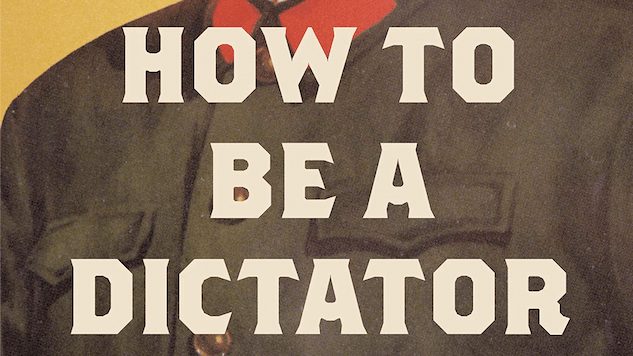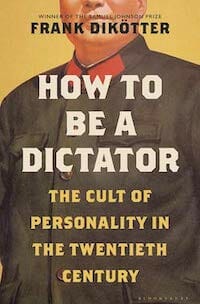How to Be a Dictator Identifies the Similarities Between Political Tyrants
Books Features frank dikotter
Although spanning decades and seas, the men profiled in Frank Dikötter’s How to Be a Dictator: The Cult of Personality in the Twentieth Century share haunting similarities.
Like conductors of horrifying symphonies, all of Dikötter’s dictators strike the same notes: barbarity, paranoia, manipulativeness, self-aggrandizing to the point of deification and an ability to engender nostalgia. They also possess the kind of work ethic de rigeur for putting the past and future of entire nations under the purview of one party, one secret police, one man.
Il Duce (Benito Mussolini), the Führer (Adolf Hitler), Soso (Joseph Stalin), the Chairman (Mao Zedong), the Great Leader (Kim Il-sung), Papa Doc (Haiti’s François Duvalier), the black star (Ethiopia’s Mengistu Haile Mariam), the Conducator (Romania’s Nicolae Ceau?escu)—these are but some of the bleakest shadows cast across the previous century, and they’re the ones Dikötter focuses on for their masterful application of the cult of personality. Dictators rule, the Dutch historian explains, with terror and the cult. And while the terror is tantamount for obvious reasons, it is How to Be a Dictator’s thesis that the cult is truly central to their power.
 A political concept so attractive in its absurdity and efficacy that it has long crossed into the mainstream, the cult of personality depends on elevating the dictator, the dictator’s party and/or the dictator’s ideals to such a level as to feel omnipotent. The men in Dikötter’s survey have their own idiosyncrasies, but what they all have in common—from socialist to fascist, from the Caribbean to the Caucasus—is a deep knowledge of the written word’s power and a desire to be enshrined by it.
A political concept so attractive in its absurdity and efficacy that it has long crossed into the mainstream, the cult of personality depends on elevating the dictator, the dictator’s party and/or the dictator’s ideals to such a level as to feel omnipotent. The men in Dikötter’s survey have their own idiosyncrasies, but what they all have in common—from socialist to fascist, from the Caribbean to the Caucasus—is a deep knowledge of the written word’s power and a desire to be enshrined by it.
A dictator is made by language, for it is language that leeches into society and strikes like lightning. Great religions stem from great teachings; great teachings gain power from being written down. To holy books, dictators add Little Red Books and jailhouse treatises until something like secular worship—replete with icons—springs forth. The fawning, ridiculous hagiography of the dictator is present throughout every regime in How to Be a Dictator, perhaps even the answer to the title. Almost all are invoked as guiding stars and benevolent figures whose martial, scientific and economic prowess will lead their people into a new golden age.
Even more striking is their shared obsession with being enshrined in schools of political and social thought. These dictators are the great -ism chasers—the suffix the ultimate sign of their reign and their desire to make it everlasting. To have an -ism—Stalinism, Maoism—is to have one’s name attached to the guiding principles of one’s revolution and rule, a stamp demarcating an entire system as their own.
The -ism is the legacy which outlasts physical works and the paper it is printed on; it outlasts the dictator and dictatorship. It can be turned for the end of all time, every facet examined like a blood diamond, every word picked through and analyzed like the remains of a mass grave. It can cross time and seas, enveloping another nation until the newest dictator to wield it unveils a new iteration.
Monuments crumble and statues fall, but How to Be a Dictator succeeds in identifying how and why linguistic domination has lasting power.
B. David Zarley is a senior staff writer for Freethink. His writing has been featured in The Atlantic, The Verge, Jezebel, VICE Sports, Frieze, Hazlitt and numerous other publications. He lives in Chicago.